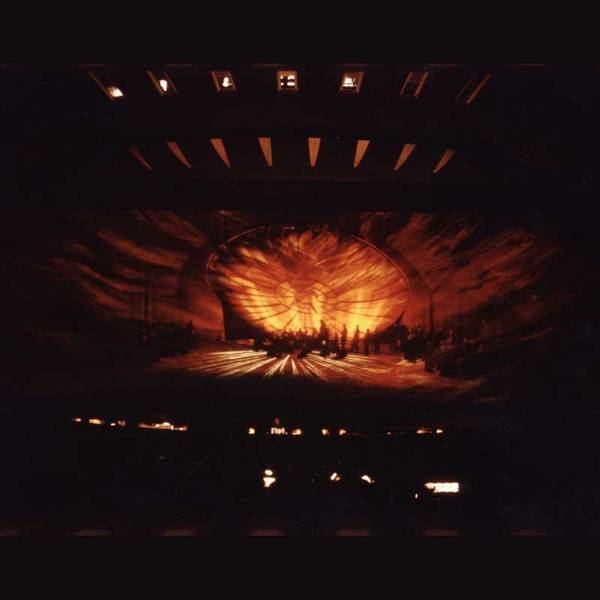First performance 20 August 1973 | Based on prophetic writings Written 1971 | |
 | ||
Translation A Play on the End of Time Similar Antigonae, Trionfo di Afrodite, Der Mond, Die Kluge, Edipo rey | ||
Carl orff die sibyllen de temporum fine comoedia
De temporum fine comoedia (Latin for A Play on the End of Time) is an opera or musical play by 20th century German composer Carl Orff. It was his last work and took ten years to compose (1962 to 1972, revised in 1979). Its premiere was at the Salzburg Music Festival on 20 August 1973 by Herbert von Karajan and the Cologne Radio Symphony Orchestra and Chorus, staged by August Everding. In this highly personal work Orff presented a mystery play in which he summarized his view of the end of time, sung in Ancient Greek, Latin, and German (translation by Wolfgang Schadewaldt.
Contents
- Carl orff die sibyllen de temporum fine comoedia
- Carl orff de temporum fine comoedia salzburg 1972 herbert von karajan
- SummaryDramatis Personae
- I Die Sibyllen The Sibyls
- Orchestration
- Tape sections
- 1979 revision
- References
Carl orff de temporum fine comoedia salzburg 1972 herbert von karajan
Summary/Dramatis Personae
The opera is in 3 parts, with each part having its own characters. Part I involves 9 Sibyls, represented by female singers.
Part II involves 9 Anchorites, represented by male singers
There is also a children's choir, along with a tenor section that is heard on a magnetic tape.
Part III involves the following people.
There is also a double chorus of sopranos and altos used near the end, as well as two soloists, tenor and contralto, to represent the "Vox Mundana". A children's choir is also used to represent the "Voces caelestes".
I. Die Sibyllen (The Sibyls)
- "Heis theós estin anarchos, hypermegéthaes, agénaetos" (A god is, without beginning, immense, unformed)
- "Opse theü g’aléüsi myloi" (The mills of God are late to grind)
- "Pasin homü nyx estin isae tois plüton echusin kai ptochois" (The same night awaits all, rich and poor)
- "Choneusó gar hapanta kai eis katharón dialexó" (I will melt everything down and purify it)
- "Vae! Ibunt impii in gehennam ignis eterni" (Woe! The impious shall enter the hell of the eternal fire)
Orchestration
The music requires a very unusual, and possibly symmetrical orchestra:
The percussion section, requiring about 25 to 30 players, consists of:
The total forces used for the taped sections are
There is also one spoken part, an echo of one of the sibyls' spoken dialogue, accompanied by wind machine.
Tape sections
The music on magnetic tape is used in four different places, most notably at the end when Lucifer appears.
The first section is used in Part I, and requires the following instruments:
The second section, also used in Part I utilises the following:
The third section is used in Part II:
The fourth and final section is used towards the end of Part III. In Orff's final revision in 1981, this taped section was omitted and instead given to players in the orchestra:
1979 revision
Orff later made extensive revisions to De temporum fine comoedia with many changes in orchestration. In his 1981 revision the following instruments were added:
The following instruments were eliminated:
The modifications to the pre-recorded music consist of the addition of the following:
The omissions consisted of:
In addition to loud percussive passages, there are also as periods of calm piano and straight dialogue. In this culmination of his stage works, Orff almost abandons his diatonicism to chromaticism, which enriches and thickens the musical texture, and octatonicism.
As the play is about to finish, after the destruction of all worldly material, Satan asks for forgiveness and is restored to Angel Lucifer, thus forgiven. The unsettling chromaticism here ends and Bach's Before Thy Throne (Vor deinen Thron tret ich hiermit, BWV 668) strikes up in a canon from the four viols. This canon is pandiatonic and upon its completion its mirror image is stated (that is the identical material played backwards).
